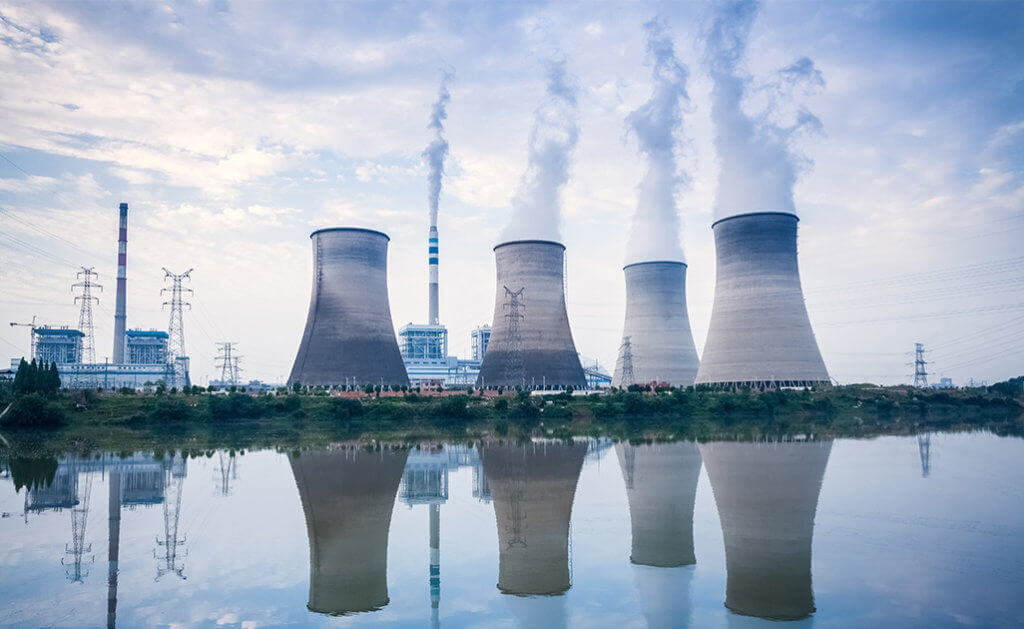WTW | A new way forward: Cutting through Asia’s coal conundrum
September 29 2023

With power demand soaring and coal placements declining, fossil fuel plants and insurers must work in tandem to accelerate decarbonisation and ensure the region’s resilience.
Policymakers and corporate leaders worldwide have described Asia as key to delivering the world’s net-zero ambitions and winning the battle against climate change. This belief is rooted in the fact that the region operates in a “brown” economy — one that remains heavily dependent on fossil fuels such as coal.
According to the International Energy Agency (IEA), coal makes up nearly half of Asia Pacific’s energy mix[1]. Despite advancements in renewable energy adoption, coal consumption is expected to remain at all-time highs this year[2], as strong growth in Asian economies outpaces coal declines in the West. The IEA also forecasts that the demand for coal will only likely abate at the end of this decade[3].
In parallel, a growing number of insurers are now excluding coal from their books as they shun the energy source in favour of ESG-friendly alternatives. Today, the market share of insurers with coal exclusions has reached 39% in the primary insurance market, and 62% in the reinsurance market.
Further premium rates increases and deterioration in terms are expected to persist. As a result, fossil fuel plants are finding it increasingly harder to secure placements, irrespective of asset risk quality and loss history and little room for negotiation with their insurers.
Looking ahead, both coal power businesses and insurers expect these insurability challenges to persist as investor and policy pressures demand bigger, bolder action towards decarbonisation. Many (re)insurers in Europe have chosen not to put any new coal programmes on their books and are gradually lapsing their coal programmes to achieve net zero within their target dates.
Yet the growing inability to secure placements could put coal assets at risk of being stranded, resulting in severe socio-economic ramifications for the region. Against this backdrop, the region’s energy security and resilience will require adaptation and cooperation from power businesses and insurers, who must accelerate their decarbonisation pathways to overcome insurability and environmental pressures; and strengthen cooperation with one another to manage transition risks and power the next phase of Asia’s energy transition.
Demonstrate clear commitments to energy transition
While the wider insurance industry re-aligns underwriting in accordance with ESG principles, a select few continue to provide placements for coal power businesses if they demonstrate a clear pathway to phase out coal in favour of cleaner alternatives. Such a policy approach recognises the importance of phasing out coal in a gradual, orderly manner to ensure a just transition for coal-dependent communities.
Companies can demonstrate clear commitments to their insurers by disclosing up-to-date, detailed information around the management of their existing emissions; a clear understanding of the risks and opportunities related to their energy transition; and their plans for retiring coal plants, investing in clean energy projects, and mitigating transition risks. To gain the confidence of their insurers, they will need to work hand-in-hand with risk intermediaries who can not only assess and quantify the aforementioned risks but provide relevant solutions to address and mitigate them.
Critics, however, might argue that the idea of phasing out coal might be too premature for coal power businesses in Asia. After all, 90% of the region’s coal plants are less than 20 years old, rendering the economics of a clear, accelerated transition infeasible in some instances. However, this should not deter them from pursuing energy transition.
On the contrary, asset owners could explore clean coal technologies that enable them to repurpose and maximise the value of their existing assets without having to compromise their renewable ambitions.
One such example is co-firing ammonia with coal during combustion in conventional coal-fired power plants.
By incorporating ammonia into the fuel mix, less coal is needed to produce the same amount of energy. This technology also allows coal producers to leverage existing coal power infrastructure to reduce power sector emissions in the near-term without having to retire these plants.
Coal gasification is also becoming increasingly popular in countries like Japan and Indonesia, as it generates cleaner energy sources like hydrogen as by-products while minimising the environmental footprint of coal firing[4]. Separately, the IEA has endorsed the potential for carbon capture, utilisation and storage (CCUS) to reduce emissions across many parts of the region’s energy systems while contributing to economic development and energy security objectives[5].
By investing in clean technologies or working towards an orderly transition to renewable energy, coal power plants can secure some form of insurance coverage, providing a layer of protection for their assets while enabling progress on their transition plans.
A smarter way to manage energy transition risk
As coal power businesses respond to new environmental and insurability challenges, so must the insurance industry. Innovation will prove just as critical in trading and matching risk to capital. Innovation could come in the form of developing new solutions like parametric insurance, which have emerged to fill insurance capacity gaps and reduce the investment volatility of renewable energy projects.
Besides new solutions, the insurance industry can explore new collaborative models to support the energy transition. Demand for different sources of energy will vary considerably across the regions.
In the past few years, we have seen public-private partnerships proliferating to help economies accelerate their exits from coal. Here, risk advisors and insurance partners play a critical role in providing the solutions needed to unlock capital and facilitate risk transfer necessary for phasing out fossil fuels.
One recent example is Philippines-based AC Energy, which has successfully utilised the Asian Development Bank’s energy transition mechanism, leveraging blended finance to ensure the early retirement of existing coal plants and thermal power plants run by South Luzon Thermal Energy Corp (SLTEC) in 2040. Together with AC Energy, we were able to support SLTEC in its insurance renewal as the company was able to provide insurers with a high degree of confidence in its energy transition plan.
The energy transition pathway requires innovative and smarter solutions to navigate regulatory, environmental, and socio-economic uncertainties. Despite these challenges, we remain optimistic that these solutions and approaches can be scaled across Asia to further accelerate our path to a clean energy future.
[1] International Energy Agency – Asia Pacific Total Energy Supply: https://www.iea.org/regions/asia-pacific
[2] Global coal demand set to remain at record levels in 2023: https://www.iea.org/news/global-coal-demand-set-to-remain-at-record-levels-in-2023
[3] Peak fossil fuel demand will happen this decade: https://www.ft.com/content/f6155d7b-2ef7-4f62-a08a-b640b7e87fca
[4] Japan’s ‘clean coal’ power experiment is starting to bear fruit: https://asia.nikkei.com/Business/Energy/Japan-s-clean-coal-power-experiment-is-starting-to-bear-fruit
[5] Carbon capture, utilisation and storage: the opportunity in Southeast Asia: https://www.iea.org/reports/carbon-capture-utilisation-and-storage-the-opportunity-in-southeast-asia/executive-summary
 |
Lyo Foo
Head of Power Asia, Corporate Risk & Broking, WTW
Email: lyo.foo@wtwco.com |
-
Allianz General | Allianz General combines innovative protection solutions while powering social good to lead Malaysian market
The insurer proactively addresses emerging risks and evolving customer protection needs while giving back to the community.
-
Sedgwick | Asia’s Energy Transformation – Balancing Growth, Risk and Renewables
Energy market presents unique risks, especially in a region which includes China and Japan as well as developing nations like Vietnam and the Philippines.
-
Beazley | Turbulent Waters: the maritime energy transition challenge
Businesses are facing a complex transition to non-carbon energy sources amid a push to achieve net-zero emissions for the marine sector by 2050.
-
Aon | Navigating shifts in the global and Asia insurance markets
Neelay Patel, Aon head of growth for Asia, says the market in Asia is at an ‘interesting stage of the cycle’.
